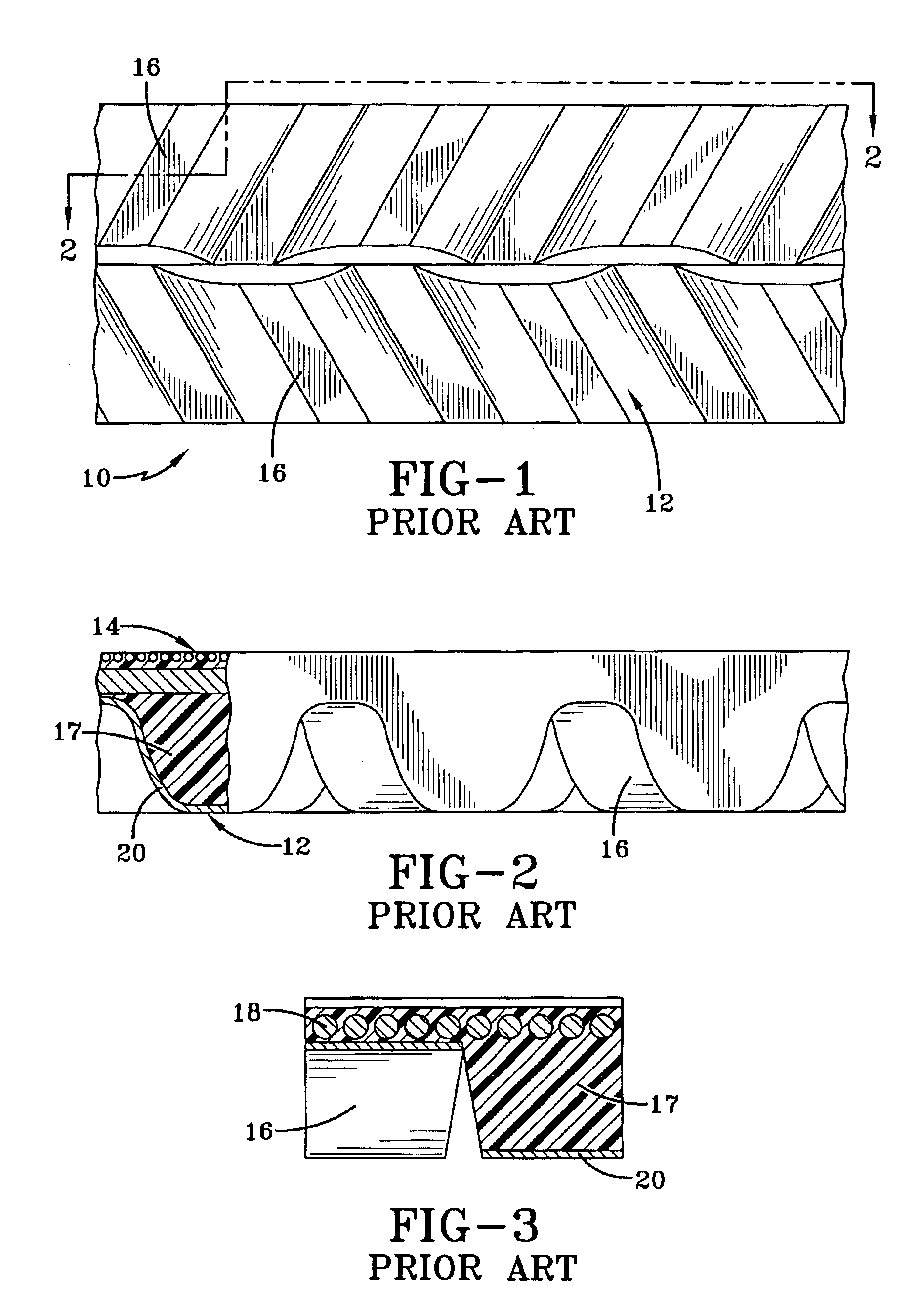Splicing joint and method for synchronous drive belt
- Summary
- Abstract
- Description
- Claims
- Application Information
AI Technical Summary
Benefits of technology
Problems solved by technology
Method used
Image
Examples
Embodiment Construction
The drawings illustrate a synchronous drive belt 10 of a type in use in conventional drive systems such as in automotive transmission applications. A belt 10 such as shown in FIGS. 1-3 includes a toothed surface 12 and a planar opposite untoothed surface 14. Spaced apart along the surface 12 are a series of drive teeth 16. The belt is made of a resilient elastomer base layer 17 typically formed of a plastic resin such as polyurethane. The belt 10 is also typically reinforced with a longitudinal tensile member 19 made up of a plurality of cords 18 of a high elastic modulus. Such cords may be made from glass fiber, carbon fiber, steel, polyester, high tenacity rayon or, preferably, steel. Such a belt is disclosed in U.S. Pat. No. 5,209,705, incorporated by reference herein.
The tooth surface 12 or the belt 10 may be reinforced with a layer 20 of abrasion resistant fabric such as nylon. The fabric includes interstices (not shown) between woven fibers that extend through the fabric from ...
PUM
| Property | Measurement | Unit |
|---|---|---|
| Elastomeric | aaaaa | aaaaa |
| Density | aaaaa | aaaaa |
| Friction | aaaaa | aaaaa |
Abstract
Description
Claims
Application Information
 Login to View More
Login to View More - R&D
- Intellectual Property
- Life Sciences
- Materials
- Tech Scout
- Unparalleled Data Quality
- Higher Quality Content
- 60% Fewer Hallucinations
Browse by: Latest US Patents, China's latest patents, Technical Efficacy Thesaurus, Application Domain, Technology Topic, Popular Technical Reports.
© 2025 PatSnap. All rights reserved.Legal|Privacy policy|Modern Slavery Act Transparency Statement|Sitemap|About US| Contact US: help@patsnap.com



